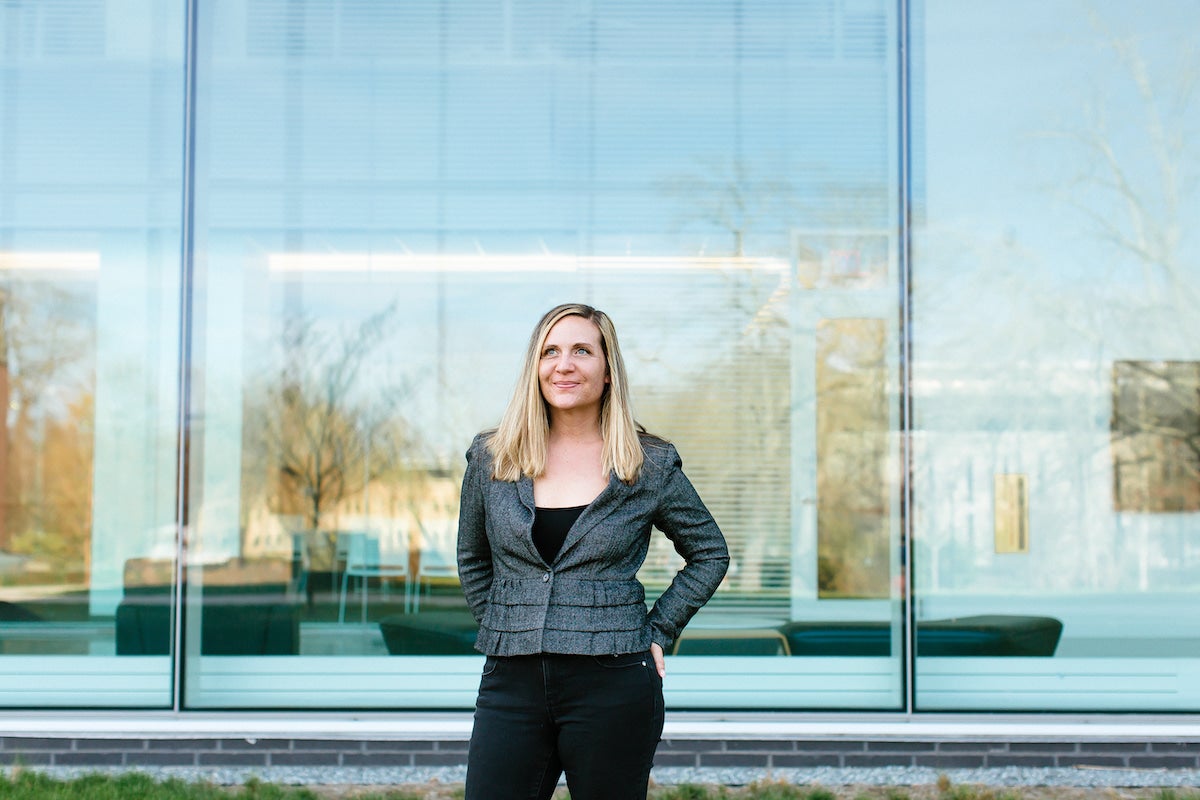Using biosensors and psychological self-reports, research aims to inform interventions to help prevent return to substance use
Residential treatment is among the most effective tools for treating substance use disorder, with people in these settings showing improvement not only in their substance use but also in their mental health, social functioning and quality of life. However, when people leave residential substance use facilities, they face immense challenges as they attempt to reintegrate into their communities and return to their normal lives.
As many as 40 to 70 percent of people who complete residential treatment return to using substances shortly after discharge, according to University of Rhode Island psychology Associate Professor Nicole Weiss. People are thrust back into a world where substances are again readily available to them. They may return to previous routines and social networks that challeng their recovery goals. Many face economic or housing instability, increasing stress, which may lead them to return to substances as a means of coping. Most who return to use do so within the first week, Weiss said.
“These findings signal a need for research that can help us identify high-risk states for return to use, as well as factors that can attenuate that risk during re-entry,” said Weiss, who leads a study funded by a $3.5 million grant from the National Institute on Drug Abuse with researchers at Brown University, the University of Connecticut and Rutgers University. “We know residential treatment is effective in reducing substance use, but we have seen that this period of community re-entry challenges those gains. We hope to develop an evidence-based tool to help prevent a return to substance use.”
Weiss will recruit 300 individuals to take part in the study as they leave residential treatment facilities. For 30 days, each participant will wear a biosensor, similar to a Fitbit, which will continuously measure physiological signs like heart rate, perspiration, and temperature. Weiss is particularly interested in heart rate variability, which is involved in the regulation of behavioral, cognitive, and emotional responses, and may be a key bio-signal for detecting risk for return to substance use.
“If our hypotheses are correct and heart rate variability predicts return to use, this may indicate the utility of wearable biosensors. Such a tool could vastly improve clinical decision making, allowing for early intervention,” Weiss said.
Participants will also answer questions on a smartphone app about their experiences in that moment—who they are with, what they are doing—their cravings for substances, and their psychological responses, including emotions, coping methods, and any mental health challenges they may be experiencing.
“It’s important to merge the biosensor data with information about the individual in those moments,” Weiss said. “We can better understand why they’re having the physiological responses we are observing. We’re hoping that data will improve our prediction models and ultimately inform tools that can help us better detect return to substance use.”
After 30 days, participants will visit Weiss’ STRESS lab in Providence, where they’ll be asked about the period of community re-entry, including what types of treatments and services they think people need to be successful, and what barriers keep people from accessing those treatments and services. The information will directly inform the development of resources and tools for this high-risk period of community re-entry.
“We are centering the voices of individuals who have lived experiences of substance use, and leveraging the knowledge they share to inform our future work in this area,” Weiss said. “There is a lot of variability in people’s experiences following residential treatment. If we think of substance use risk as constantly changing and appearing without warning to an individual, we can really see the utility of a person having access at their fingertips to a tool that can provide them with the immediate resources and supports they need. Given the extensive barriers they face, it is important to develop novel, low-barrier tools to assist them in their recovery.”

